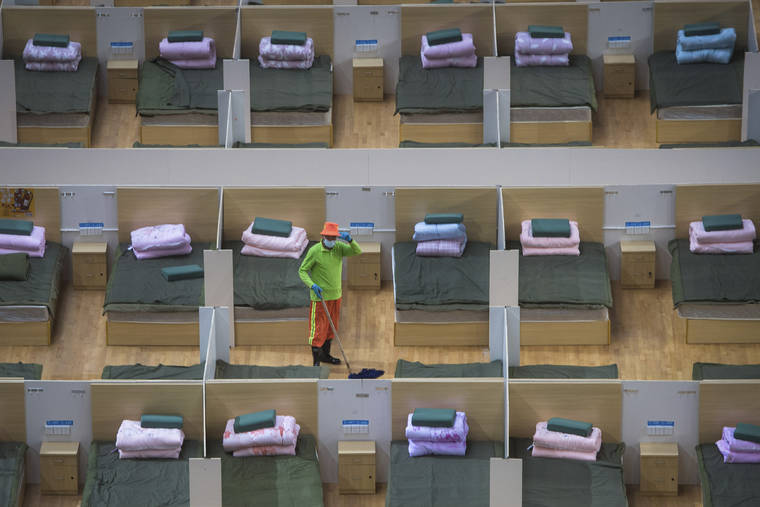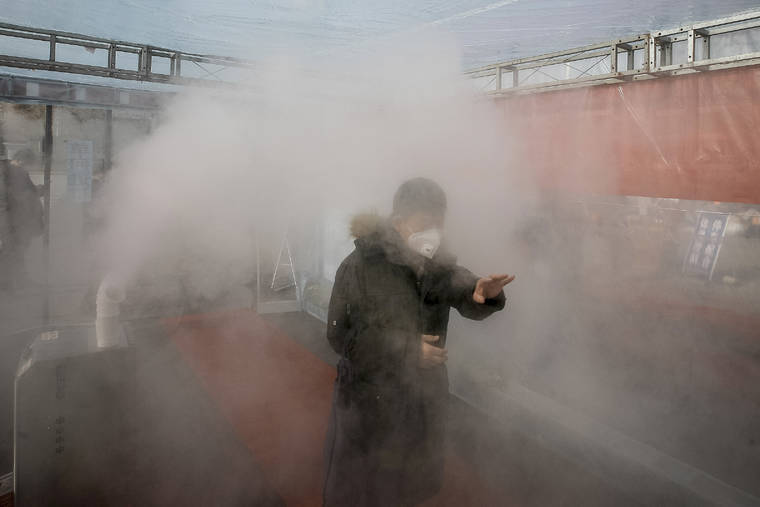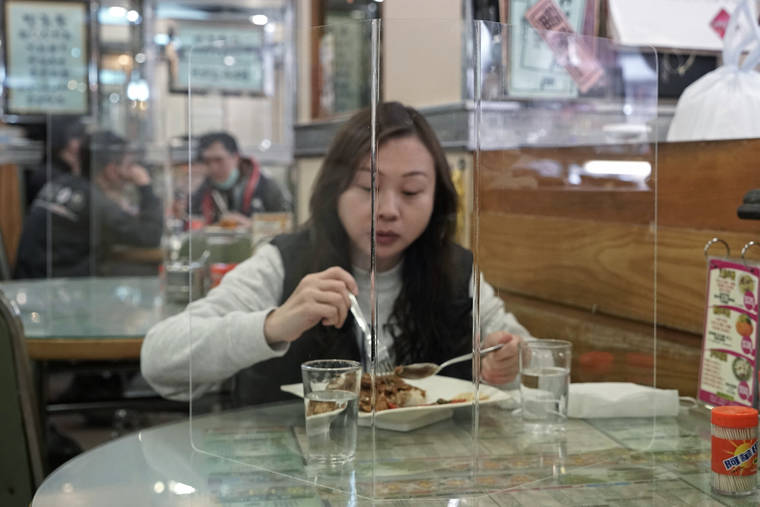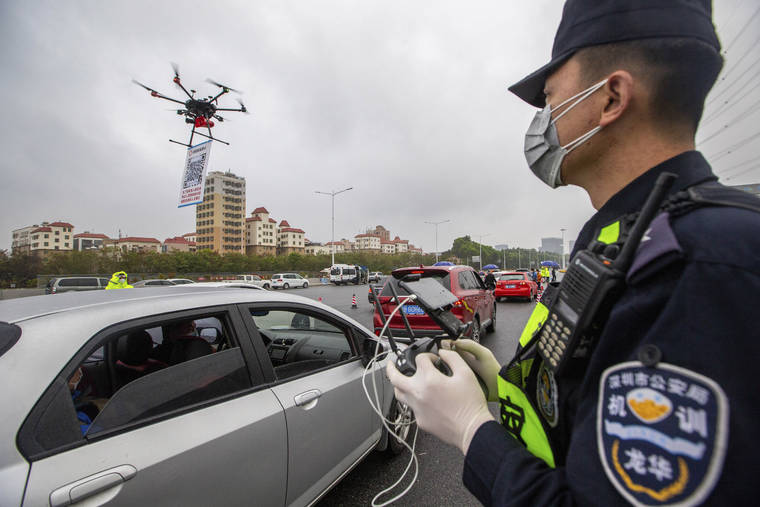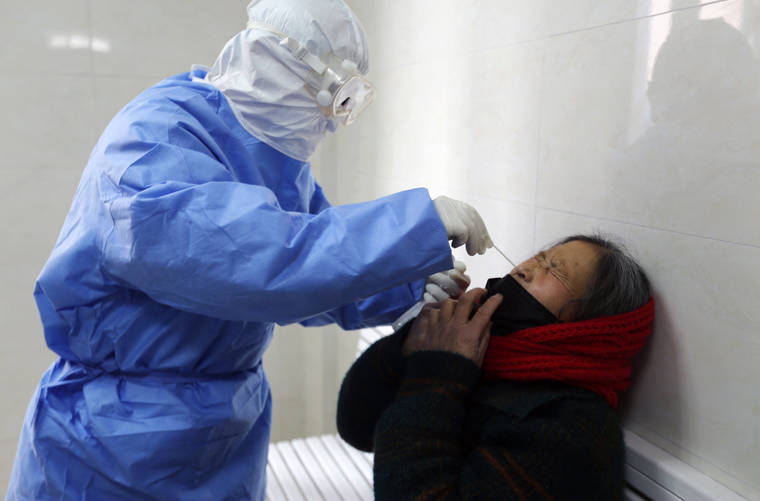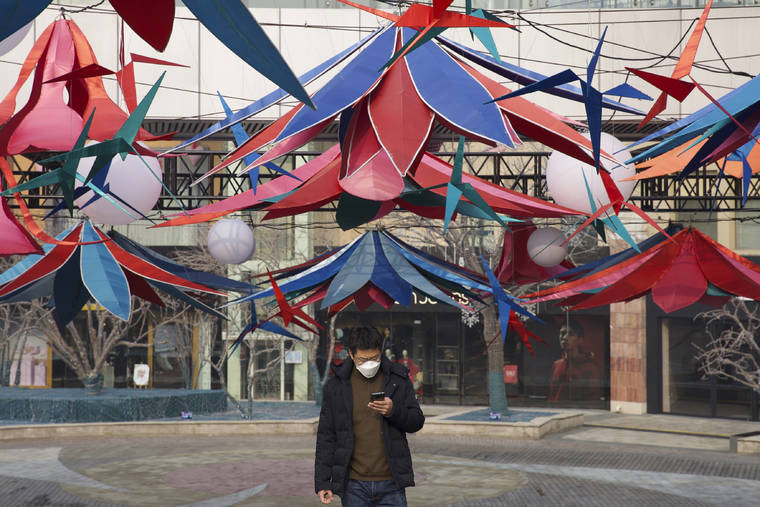BEIJING — The number of new cases of the coronavirus in China dropped for a second straight day, health officials said Wednesday in a possible glimmer of hope amid the outbreak that has infected over 45,000 people worldwide and killed more than 1,100.
Chinese President Xi Jinping, meanwhile, promised tax cuts and other aid to industry as the ruling Communist Party tries to limit the mounting damage to the economy. And in Japan, 39 new cases were confirmed on a cruise ship quarantined at Yokohama, bringing the total to 174 on the Diamond Princess.
A look at the latest developments in the crisis, which started in December in the city of Wuhan:
NEW CASES DECLINE
The number of new cases has trended down in the past week, raising hopes that the epidemic may be plateauing.
China’s National Health Commission said 2,015 new cases had been tallied on Tuesday, the second straight daily decline and down from nearly 3,900 a week ago. Commission spokesman Mi Feng said the situation is still grim but “we have seen some positive changes.”
“I’m going to be optimistic that is a sign that their aggressive actions have been effective, but I really do think it’s too soon to say that for sure, not having hands on the data ourselves,” said Dr. Nancy Messonnier of the U.S. Centers for Disease Control and Prevention.
She said she is hopeful an advance team now in China from the World Health Organization will be able to examine the findings: “It would certainly be reassuring if we were now seeing at least a slowdown of this outbreak in China.”
All but one of the deaths recorded so far have been in China, as have more than 99% of all reported infections in the world. The country has put an unprecedented 60 million people in a near quarantine.
ECONOMIC FALLOUT
China is struggling to restart its economy after the annual Lunar New Year holiday was extended to try to curb the spread of the virus. Traffic remained light in Beijing, and many people were still working at home.
Xi’s announcement of tax cuts came as companies face increasing losses because of the closing of factories, offices, shops and other businesses in the most sweeping anti-disease measures ever imposed.
A large cluster of cases in Tianjin, a port city southeast of Beijing, has been traced to a department store, Chinese state media said. One-third of Tianjin’s 104 confirmed cases are in Baodi district, where the store is situated, the Xinhua News Agency reported.
Elsewhere around the world, DBS bank in Singapore cleared its office, telling 300 employees to work from home after it learned that an employee had been infected. The city-state has 50 confirmed cases.
A Formula One race in Shanghai in April became the latest event canceled because of the virus. Nokia, Vodafone and Deutsche Telekom became the latest companies to pull out of a major wireless trade fair this month in Spain that usually draws 5,000 to 6,000 Chinese visitors.
CRUISE SHIP WOES
Passengers aboard a cruise ship that has been barred from docking by four governments may finally set foot on land again.
Holland America Line said the MS Westerdam will arrive Thursday morning in Sihanoukville, Cambodia. The ship has been turned away by the Philippines, Taiwan, Japan and Thailand, though its operator said no cases of the disease have been confirmed among the more than 2,200 passengers and crew.
NO EVIDENCE YET OF MOTHER-TO-BABY SPREAD
In a study published Wednesday in the journal Lancet, Chinese scientists reported there is no evidence so far to suggest the virus can be passed from mother to baby.
The study looked at nine pregnant women who all had the COVID-19 virus and delivered via cesarean section in a hospital in Wuhan, the epicenter of the outbreak. After the babies were born, scientists tested samples from the newborns, including the amniotic fluid, cord blood and throat swabs. All tested negative for the virus.
But the scientists acknowledged the study was small.
To date, two cases of the virus have been confirmed in babies, including a newborn diagnosed just 36 hours after birth. It is unknown how the child was infected.
Associated Press writers Mari Yamaguchi in Tokyo, Elaine Kurtenbach in Singapore, James Heintz in Moscow, Grant Peck in Bangkok, Kelvin Chan and Maria Cheng in London and Joe McDonald, Dake Kang, Yanan Wang and researcher Yu Bing in Beijing contributed to this report.







